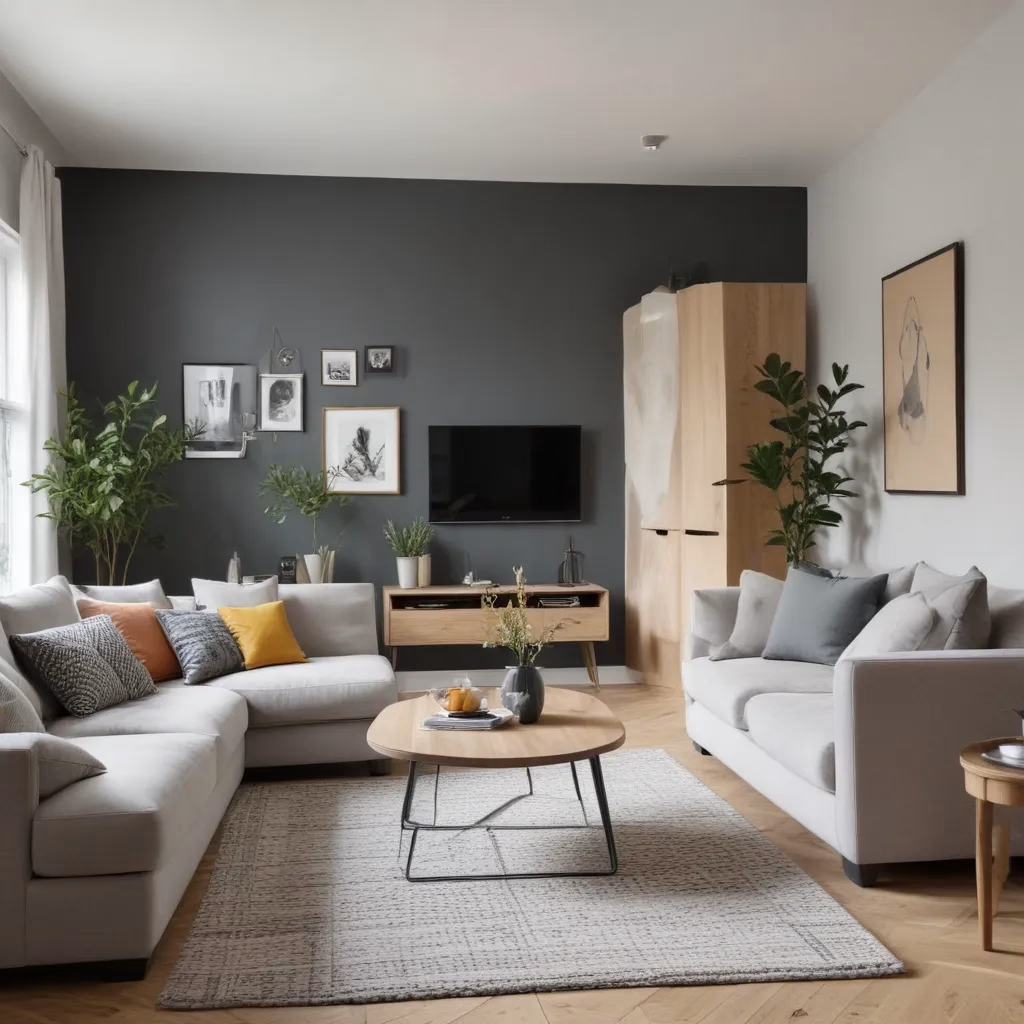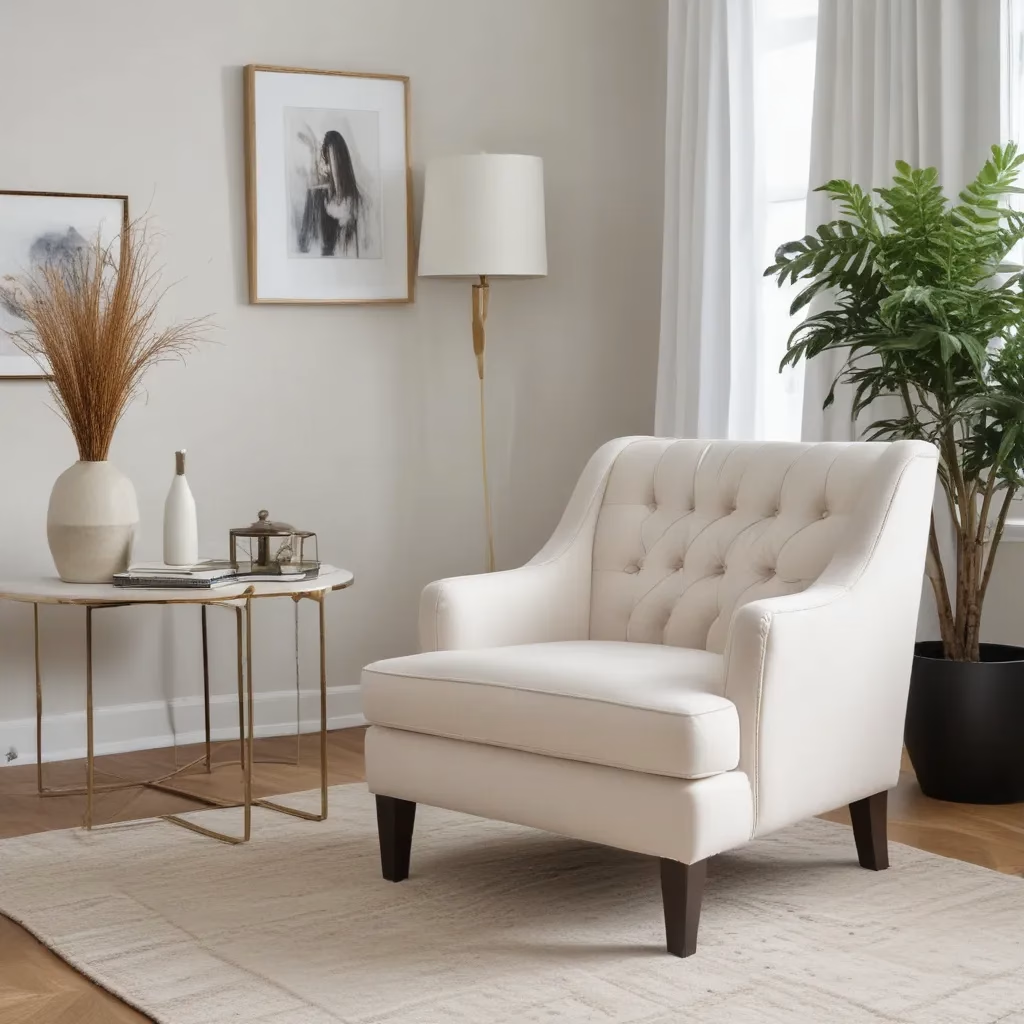
The Art of Sofa Selection
When it comes to creating a comfortable and inviting living space, few pieces of furniture play as crucial a role as the sofa. As a furniture specialist with years of experience, I’ve seen firsthand how the right sofa can transform a room from ordinary to extraordinary. But how do you go about choosing the perfect sofa for your home?
First and foremost, consider your lifestyle. Are you a family with young children and pets? Or perhaps you’re a couple who loves to entertain? Your daily life should be the primary factor in determining the style, fabric, and construction of your sofa. For instance, if you have a bustling household, you might want to opt for a durable, stain-resistant fabric that can withstand the rigors of daily use.
Next, think about the size of your space. A common mistake I see is people choosing sofas that are either too large or too small for their rooms. To avoid this, I always recommend measuring your space carefully before shopping. Don’t forget to account for walkways and other furniture pieces. A good rule of thumb is to leave at least 18 inches of space around the sofa for comfortable movement.
Color is another critical factor in sofa selection. While it’s tempting to choose a bold, statement-making hue, I often advise my clients to consider a neutral palette for their main sofa. Why? Because neutrals offer flexibility. You can easily change the look of your room by switching out accent pillows and throws, rather than committing to a single color scheme for years to come.
Upholstery Care: Keeping Your Sofa Looking Fresh
Once you’ve selected the perfect sofa, maintaining its appearance becomes paramount. Over the years, I’ve developed a set of best practices for upholstery care that can help extend the life of your furniture and keep it looking its best.
Regular vacuuming is the foundation of good upholstery care. I recommend vacuuming your sofa at least once a week to remove dust, dirt, and debris before it can settle into the fabric. Use a soft brush attachment to avoid damaging the upholstery, and don’t forget to get into the crevices and under the cushions.
Spills are inevitable, but how you handle them can make all the difference. The key is to act quickly. Blot (don’t rub!) the spill with a clean, white cloth to absorb as much liquid as possible. For water-based stains, a mixture of mild soap and water can be effective. However, for oil-based stains or anything more stubborn, it’s best to consult a professional cleaner.
Sunlight can be a silent enemy of upholstery, causing fading and fabric degradation over time. If your sofa is placed near windows, consider using sheer curtains or UV-protective window film to filter out harmful rays. Rotating your cushions regularly can also help ensure even wear and color retention.
Trends in Sofa Design: What’s Hot in Home Decor
As someone who’s been in the furniture industry for years, I’ve seen trends come and go. However, some current trends in sofa design seem to have staying power. One such trend is the resurgence of curved and organic shapes. After years of boxy, angular designs dominating the market, we’re seeing a return to softer, more fluid forms that add a touch of elegance to any space.
Another trend I’m excited about is the focus on sustainability. More and more consumers are looking for eco-friendly options, and furniture manufacturers are responding. From recycled fabrics to FSC-certified wood frames, there are now many ways to choose a sofa that aligns with your environmental values.
Modularity is also gaining popularity, especially in urban areas where space is at a premium. Modular sofas allow for customization and flexibility, letting you reconfigure your seating arrangement as needed. This adaptability is particularly appealing to younger homeowners who may move frequently or have changing lifestyle needs.
The Psychology of Comfort: Creating Your Perfect Relaxation Space
As a furniture specialist, I’ve learned that comfort is about more than just cushion density and seat depth. There’s a psychological aspect to creating a truly relaxing space, and your sofa plays a central role in this.
Color psychology can have a significant impact on how we perceive and feel in a space. Cool blues and greens can create a calming atmosphere, while warm yellows and oranges can evoke feelings of coziness and comfort. When selecting your sofa color, consider the mood you want to create in your room.
The arrangement of your furniture can also affect your sense of comfort and relaxation. In my experience, creating conversation areas with your sofa as the focal point can enhance social interaction and make a space feel more inviting. On the other hand, if you’re looking for a more private, cocoon-like feel, consider placing your sofa against a wall or in a corner.
Texture is another important element in creating a comfortable space. Mixing different textures can add depth and interest to your room. For example, pairing a smooth leather sofa with plush throw pillows and a chunky knit blanket can create a rich, tactile experience that invites relaxation.
Sofa Innovations: What’s New in Comfort Technology
The world of sofa design is constantly evolving, with new technologies and innovations emerging all the time. As someone who’s always keeping an eye on the latest developments, I’m excited to share some of the most interesting advancements I’ve seen recently.
Smart sofas are becoming increasingly popular. These high-tech pieces of furniture can include features like built-in USB charging ports, adjustable headrests, and even massage functions. While they may not be for everyone, they certainly offer a new level of convenience and comfort.
Memory foam, long used in mattresses, is now making its way into sofa design. This material conforms to your body, providing excellent support and comfort. However, it’s worth noting that memory foam can retain heat, so it may not be the best choice for those who tend to run warm.
Another innovation I’m seeing more of is the incorporation of air purification systems into sofas. These can help remove allergens and odors from your living space, contributing to a healthier home environment.
The Role of Sofas in Interior Design
As a furniture specialist, I often work closely with interior designers, and I’ve come to appreciate the pivotal role that sofas play in overall room design. A sofa isn’t just a place to sit; it’s often the largest piece of furniture in a room and can set the tone for the entire space.
When designing a room around a sofa, consider its lines and proportions. A low-profile sofa can make a room feel more spacious, while a high-backed sofa can create a sense of coziness and intimacy. The shape of your sofa can also influence the flow of the room. For instance, a sectional can help define separate areas in an open-plan space.
Don’t underestimate the power of negative space. While it might be tempting to fill every corner of your room, leaving some empty space around your sofa can actually make your room feel larger and more balanced. This is particularly important in smaller spaces where overcrowding can quickly lead to a cluttered feel.
Remember that your sofa doesn’t have to match everything else in the room perfectly. In fact, some contrast can add visual interest and depth to your space. For example, pairing a sleek, modern sofa with vintage side tables can create an eclectic, personalized look.
Sofa Placement: Maximizing Comfort and Flow
One aspect of sofa selection that often gets overlooked is placement. Where you position your sofa can have a significant impact on both the comfort and functionality of your space. Over the years, I’ve developed some guidelines that can help you make the most of your room layout.
In a living room, the sofa is typically the anchor piece. A common arrangement is to place the sofa facing the room’s focal point, whether that’s a fireplace, a TV, or a large window with a view. This creates a natural gathering spot and helps define the purpose of the space.
If you have a large room, consider floating your sofa away from the walls. This can create a more intimate seating area and can help break up a large space into more manageable zones. Just be sure to leave enough room for traffic flow around the sofa.
For smaller spaces, a sofa placed against a wall can help maximize floor space. However, try to avoid pushing it right up against the wall if possible. Even a few inches of space can make a room feel more open and less cramped.
The Future of Sofa Design: Predictions and Possibilities
As someone who’s been in the furniture industry for many years, I’m always excited to think about what the future might hold for sofa design. Based on current trends and emerging technologies, I have a few predictions about where we might be headed.
I believe we’ll see an increased focus on adaptability and multi-functionality in sofa design. With more people working from home and living in smaller spaces, furniture that can serve multiple purposes will become increasingly valuable. We might see sofas with built-in desks or storage compartments becoming more common.
Sustainability is likely to become even more important in the coming years. I predict we’ll see more sofas made from recycled or biodegradable materials, as well as designs that are easily disassembled for recycling at the end of their life cycle.
Virtual and augmented reality technologies could also play a role in the future of sofa shopping. Imagine being able to see exactly how a sofa would look in your space before you buy it, or even customizing every aspect of your sofa in a virtual environment.
Conclusion: Your Perfect Sofa Awaits
Choosing the right sofa is a deeply personal decision that depends on your unique needs, preferences, and lifestyle. As we’ve explored in this article, there are many factors to consider, from size and style to comfort and durability. But with the right knowledge and guidance, you can find a sofa that not only meets your practical needs but also enhances your living space and contributes to your overall well-being.
Remember, your sofa is more than just a piece of furniture; it’s the heart of your living room, a place where memories are made and shared. Whether you’re curling up with a good book, gathering with friends for movie night, or simply relaxing after a long day, your sofa should be a place of comfort and joy.
At Sofa Spectacular, we understand the importance of finding the perfect sofa. Our team of experts is always ready to help you navigate the world of sofa selection, offering personalized advice and a wide range of options to suit every taste and budget. Why not visit us today and take the first step towards creating your ideal relaxation retreat?



